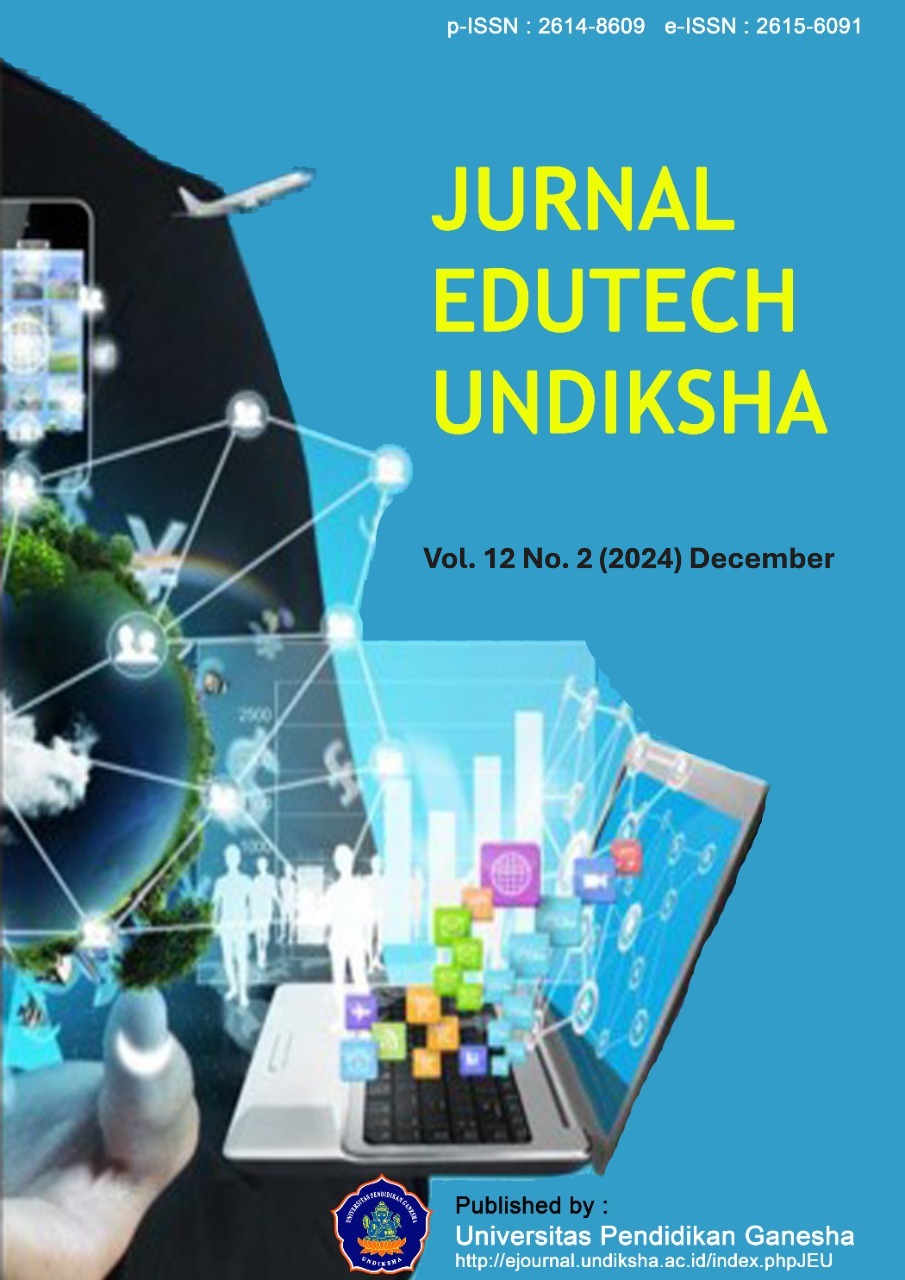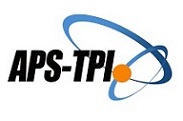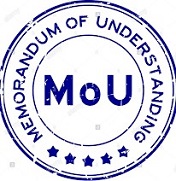Examining the Effectiveness of Augmented Reality-Based Practical Models in Electropneumatic Education in Vocational High Schools
DOI:
https://doi.org/10.23887/jeu.v12i2.75021Keywords:
Electropneumatics, Practical Model, Augmented RealityAbstract
The challenges in teaching electropneumatics in vocational high schools (SMK) lie in the limited availability of learning media that can facilitate effective and engaging practical activities. This study aims to examine the effectiveness of implementing an augmented reality-based practical model by assessing its impact on: student learning motivation, student learning outcomes, and student satisfaction. The research employed a quantitative method with data collection through tests, checklists, and questionnaires. Data were collected before and after the implementation of the model using pre-tests, post-tests, motivation checklists, and user satisfaction questionnaires. The results indicate that the application of the augmented reality-based practical model effectively increased student learning motivation from the moderate category (58.5) to the high category (76.0). Additionally, students’ learning outcomes showed significant improvement, with average pre-test scores of 54.2 and post-test scores of 77.6. To measure the improvement in student understanding, the N-Gain Score was used, showing a 31.48% increase in understanding, categorized as moderate. Student satisfaction with the application was also rated positively, though there is room for improvement. Descriptive analysis demonstrated that this model significantly enhanced students' understanding of electropneumatic material and had a positive impact on user satisfaction. In conclusion, the augmented reality-based practical model has been proven effective in improving student motivation, learning outcomes, and satisfaction.
References
Abdullah, N., Baskaran, V. L., Mustafa, Z., Ali, S. R., & Zaini, S. H. (2022). Augmented Reality: The Effect in Students’ Achievement, Satisfaction and Interest in Science Education. International Journal of Learning, Teaching and Educational Research, 21(5), 326–350. https://doi.org/10.26803/ijlter.21.5.17.
Alzahrani, N. M. (2020). Augmented reality: A systematic review of its benefits and challenges in e-learning contexts. Applied Sciences (Switzerland), 10(16). https://doi.org/10.3390/app10165660.
Amores-Valencia, A., Burgos, D., & Branch-Bedoya, J. W. (2023). The Impact of Augmented Reality (AR) on the Academic Performance of High School Students. Electronics (Switzerland), 12(10). https://doi.org/10.3390/electronics12102173.
Arici, F., Yildirim, P., Caliklar, Ş., & Yilmaz, R. M. (2019). Research trends in the use of augmented reality in science education: Content and bibliometric mapping analysis. Computers and Education, 142(August), 103647. https://doi.org/10.1016/j.compedu.2019.103647.
Ayu, R. F. K., Jannah, Z., Fauziah, N., Ningsih, T. N., Manilaturrohmah, M., Suryadi, D. A., Budiarti, R. P. N., & Fitriyah, F. K. (2021). Planetarium Glass Based on Augmented Reality to Improve Science Literacy Knowledge in Madura Primary Schools. Child Education Journal, 3(1), 19–29. https://doi.org/10.33086/cej.v3i1.1768.
Baker, D. L., Richards-Tutor, C., Sparks, A., & Canges, R. (2018). Review of Single Subject Research Examining the Effectiveness of Interventions for At-Risk English Learners. Learning Disabilities Research and Practice, 33(2), 64–74. https://doi.org/10.1111/ldrp.12160.
Bima, M., Saputro, H., & Efendy, A. (2021). Virtual Laboratory to Support a Practical Learning of Micro Power Generation in Indonesian Vocational High Schools. Open Engineering, 11(1), 508–518. https://doi.org/10.1515/eng-2021-0048.
Bork, F., Lehner, A., Eck, U., Navab, N., Waschke, J., & Kugelmann, D. (2021). The Effectiveness of Collaborative Augmented Reality in Gross Anatomy Teaching: A Quantitative and Qualitative Pilot Study. Anatomical Sciences Education, 14(5), 590–604. https://doi.org/10.1002/ase.2016.
Buchner, J., Buntins, K., & Kerres, M. (2022). The impact of augmented reality on cognitive load and performance: A systematic review. Journal of Computer Assisted Learning, 38(1), 285–303. https://doi.org/10.1111/jcal.12617.
Bursali, H., & Yilmaz, R. M. (2019). Effect of augmented reality applications on secondary school students’ reading comprehension and learning permanency. Computers in Human Behavior, 95. https://doi.org/10.1016/j.chb.2019.01.035.
Chen, C. H., Huang, C. Y., & Chou, Y. Y. (2019). Effects of augmented reality-based multidimensional concept maps on students’ learning achievement, motivation and acceptance. Universal Access in the Information Society, 18(2), 257–268. https://doi.org/10.1007/s10209-017-0595-z.
Chen, Y. (2019). Effect of Mobile Augmented Reality on Learning Performance, Motivation, and Math Anxiety in a Math Course. Journal of Educational Computing Research, 57(7), 1695–1722. https://doi.org/10.1177/0735633119854036.
Cholik, M., Samani, M., Buditjahjanto, I. G. P. A., & Putri, A. R. (2021). The effect of education system components on the quality of vocational high school graduates. International Journal of Instruction, 14(3), 24–254. https://doi.org/10.29333/iji.2021.14314a.
Cox, D., & Prestridge, S. (2020). Understanding fully online teaching in vocational education. Research and Practice in Technology Enhanced Learning, 15(1). https://doi.org/10.1186/s41039-020-00138-4.
Criollo-C, S., Abad-Vásquez, D., Martic-Nieto, M., Velásquez-G, F. A., Pérez-Medina, J. L., & Luján-Mora, S. (2021). Towards a new learning experience through a mobile application with augmented reality in engineering education. Applied Sciences (Switzerland), 11(11). https://doi.org/10.3390/app11114921.
Dhar, P., Rocks, T., Samarasinghe, R. M., Stephenson, G., & Smith, C. (2021). Augmented reality in medical education: students’ experiences and learning outcomes. Medical Education Online, 26(1). https://doi.org/10.1080/10872981.2021.1953953.
Diao, P. H., & Shih, N. J. (2019). Trends and research issues of augmented reality studies in architectural and civil engineering education-A review of academic journal publications. Applied Sciences (Switzerland), 9(9). https://doi.org/10.3390/app9091840.
Erbas, C, & Demirer, V. (2019). The effects of augmented reality on students’ academic achievement and motivation in a biology course. Journal of Computer Assisted Learning, 35(3), 450–458. https://doi.org/10.1111/jcal.12350.
Erbas, Cagdas, & Demirer, V. (2019). The effects of augmented reality on students’ academic achievement and motivation in a biology course. Journal of Computer Assisted Learning, 35(3), 450–458. https://doi.org/10.1111/jcal.12350.
Ferm, L. (2021). Vocational students’ ways of handling the academic/vocational divide. International Journal for Research in Vocational Education and Training (IJRVET), 8(1), 1–20. https://doi.org/https://doi.org/10.13152/IJRVET.8.1.1.
Fidan, M., & Tuncel, M. (2019). Integrating augmented reality into problem based learning: The effects on learning achievement and attitude in physics education. In Computers and Education (Vol 142). Elsevier Ltd. https://doi.org/10.1016/j.compedu.2019.103635.
Gäthke, J. (2020). The impact of augmented reality on overall service satisfaction in elaborate servicescapes. Journal of Service Management, 31(2), 227–246. https://doi.org/10.1108/JOSM-05-2019-0151.
Grolleau, G., Mzoughi, N., & Pekovic, S. (2022). An empirical analysis of the relationship between innovation activities and job satisfaction among French firms. Journal of Vocational Behavior, 133. https://doi.org/10.1016/j.jvb.2021.103689.
Guntur, M. I. S., & Setyaningrum, W. (2021). The Effectiveness of Augmented Reality in Learning Vector to Improve Students’ Spatial and Problem-Solving Skills. International Journal of Interactive Mobile Technologies, 15(5), 159–173. https://doi.org/10.3991/ijim.v15i05.19037.
Hashim, N. C., Majid, N. A. A., Arshad, H., & Obeidy, W. K. (2018). User Satisfaction for an Augmented Reality Application to Support Productive Vocabulary Using Speech Recognition. Advances in Multimedia, 2018. https://doi.org/10.1155/2018/9753979.
Hasyim, N., Arnidah, A., & Hasfat, H. (2021). The Development Of Multimedia-Based Digital Simulation E-Book For Vocational Schools. Journal of Educational Science and Technology (EST), 84–96. https://doi.org/10.26858/est.v7i1.19193.
Hoerunnisa, A., Suryani, N., & Efendi, A. (2019). the Effectiveness of the Use of E-Learning in Multimedia Classes To Improve Vocational Students’ Learning Achievement and Motivation. Kwangsan: Jurnal Teknologi Pendidikan, 7(2), 123. https://doi.org/10.31800/jtp.kw.v7n2.p123--137.
Inderanata, R. N., & Sukardi, T. (2023). Investigation study of integrated vocational guidance on work readiness of mechanical engineering vocational school students. Heliyon, 9(2), e13333. https://doi.org/10.1016/j.heliyon.2023.e13333.
Indrawati, C. D. S., Ninghardjanti, P., Dirgatama, C. H. A., & Wirawan, A. W. (2022). The effect of practicum learning based audiovisual on students’ learning outcomes in Indonesian vocational secondary school. International Journal of Evaluation and Research in Education, 11(1), 403–408. https://doi.org/10.11591/ijere.v11i1.21762.
Jaya, H., Haryoko, S., Lu’mu, & Ida, P. (2020). Use of remote lab for online and real time practicum at vocational school in Indonesia. International journal of online and biomedical engineering, 16(5), 4–14. https://doi.org/10.3991/IJOE.V16I05.13201.
Juliantari, luqman azhar, Florentinus, totok sumaryanto, & Wibawanto, H. (2017). Pengembangan e-Rapor Kurikulum 2013 Berbasis Web di SMK Negeri 1 Slawi. Innovative Journal of Curriculum and Educational Technology, 6(1), 11–16. https://doi.org/10.15294/ijcet.v6i1.15571.
Kaur, D. P., Mantri, A., & Horan, B. (2020). Enhancing student motivation with use of augmented reality for interactive learning in engineering education. Procedia Computer Science, 172(2019), 881–885. https://doi.org/10.1016/j.procs.2020.05.127.
Keijzer, R., van Schooten, E., van der Rijst, R., & Admiraal, W. (2022). Individual characteristics of students in vocational education moderating the relationship between school engagement and vocational identity. European Journal of Psychology of Education, 37(4), 1255–1283. https://doi.org/10.1007/s10212-021-00580-y.
Khan, R. M. I., Ali, A., Kumar, T., & Venugopal, A. (2023). Assessing the efficacy of augmented reality in enhancing EFL vocabulary. Cogent Arts and Humanities, 10(1). https://doi.org/10.1080/23311983.2023.2223010.
Khan, T., Johnston, K., & Ophoff, J. (2019). The Impact of an Augmented Reality Application on Learning Motivation of Students. Advances in Human-Computer Interaction, 2019. https://doi.org/10.1155/2019/7208494.
Lee, C. J., & Hsu, Y. (2021). Sustainable education using augmented reality in vocational certification courses. Sustainability (Switzerland), 13(11). https://doi.org/10.3390/su13116434.
Lester, S., & Hofmann, J. (2020). Some pedagogical observations on using augmented reality in a vocational practicum. British Journal of Educational Technology, 51(3), 645–656. https://doi.org/10.1111/bjet.12901.
Mulianti, S., Susanta, A., Hanifah, H., & Haji, S. (2023). Pengaruh Pendekatan Problem Based Learning (Pbl) Berbantuan Augmented Reality (Ar) Terhadap Kemampuan Pemecahan Masalah Matematika Di Smk Negeri 1 Lebong. Jurnal Lebesgue : Jurnal Ilmiah Pendidikan Matematika, Matematika dan Statistika, 4(2), 930–939. https://doi.org/10.46306/lb.v4i2.358.
Nanda, L. K. S., Trisniawati, T., & Muanifah, M. T. (2022). Development of Android-Based Augmented Reality 3D Card Media for Elementary School Students. AlphaMath : Journal of Mathematics Education, 8(1), 88. https://doi.org/10.30595/alphamath.v8i1.12920.
Nurlaily, S., Ahmad, M., Syarif, S., Budu, Idris, I., & Stang. (2021). Effectiveness of Augmented Reality (AR) based learning media on increasing the physical examination system of pregnant women urinary system. Gaceta Sanitaria, 35, S221–S223. https://doi.org/10.1016/j.gaceta.2021.10.025.
Sirakaya, M., & Cakmak, E. K. (2018). Effects of augmented reality on student achievement and self-efficacy in vocational education and training. International Journal for Research in Vocational Education and Training, 5(1), 1–18. https://doi.org/10.13152/IJRVET.5.1.1.
Suartini, T. (2019). Influence Application of Learning Model on Vocational Education Based on Quality Issurance. SAGE Open, 9(2). https://doi.org/10.1177/2158244019851552.
Suharno, Pambudi, N. A., & Harjanto, B. (2020). Vocational education in Indonesia: History, development, opportunities, and challenges. Children and Youth Services Review, 115(May), 105092. https://doi.org/10.1016/j.childyouth.2020.105092.
Sukardjo, M., Uswatun Khasanah, Stephanus Turibius Rahmat, & Khaerudin. (2023). Augmented Reality Media Design for Electro-Pneumatic Practical Learning for Vocational High School Students (VHS). Journal of Education Technology, 7(1), 121–132. https://doi.org/10.23887/jet.v7i1.57615.
Vargas, J. C. G., Fabregat, R., Carrillo-Ramos, A., & Jové, T. (2020). Survey: Using augmented reality to improve learning motivation in cultural heritage studies. Applied Sciences (Switzerland), 10(3). https://doi.org/10.3390/app10030897.
Downloads
Published
How to Cite
Issue
Section
License
Copyright (c) 2024 Moch. Sukardjo, Robinson Situmorang, Annis Kandriasari, Marsofiyati, Stephanus Turibus Rahmat, Luh Putu Putrini Mahadewi

This work is licensed under a Creative Commons Attribution-ShareAlike 4.0 International License.
Authors who publish with the Jurnal Edutech Undiksha (JEU) agree to the following terms:
- Authors retain copyright and grant the journal the right of first publication with the work simultaneously licensed under an Attribution-ShareAlike 4.0 International (CC BY-SA 4.0) that allows others to share the work with an acknowledgment of the work's authorship and initial publication in this journal.
- Authors are able to enter into separate, additional contractual arrangements for the non-exclusive distribution of the journal's published version of the work (e.g., post it to an institutional repository or publish it in a book), with an acknowledgment of its initial publication in this journal.
- Authors are permitted and encouraged to post their work online (e.g., in institutional repositories or on their website) prior to and during the submission process, as it can lead to productive exchanges, as well as earlier and greater citation of published work. (See The Effect of Open Access)








